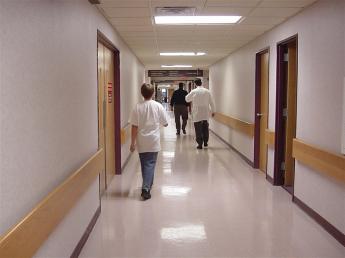|
Title:
Organ transplantation: the road ahead
Author: Angie Sutalo
Category: Current Affairs
While advances in physiology and immunology have successfully
enabled organ transplantation, unfortunately many patients
still die waiting for organs. Some scientists suggest that
xenotransplantation, the transplantation of animal tissues
and organs into humans, can alleviate this shortage.
Despite national advertising campaigns, the number of organs
donated by Australians is low by international standards:
just one suitable organ per 100,000 people.1
This figure means that only 350 organs are available for transplant,
resulting in a four-year waiting period for many potential
recipients. Organ donation from living donors is usually not
an option, even though a family member can donate one kidney
or a piece of liver – subject to a good tissue match. Most
organs are sourced from those recently deceased from natural
causes and car accident fatalities – making the widespread
harvesting of animal organs an attractive option.

In
the future, will xenotransplantation be the solution
to human organ shortage? Photo:
Pam
Roth
|
In 2002,
PPL Therapeutics, the first company to clone pigs, genetically
engineered pigs specifically for xenotransplantation purposes
with the aim of minimising the risk of organ rejection in
humans. They found that the presence of a particular sugar
(alpha-1,3-galactose) on the cell surface triggers immune
rejection, leading to rejection of foreign tissue. Scientists
removed from the pig’s genome the gene for the enzyme that
transfers this sugar to the cell surface, alpha-1,3-galactosyl
transferase. This will reduce the likelihood that a human
body will reject the organ from the pig.
Theoretically, at least, modified pigs could provide a limitless
supply of organs for transplant. In the future, people could
have their own tissue-compatible pig raised and waiting until
needed. Several problems must be addressed before this service
becomes a reality, even for a select few who can afford it.
Altered pig organs will still trigger immunological responses
in the human body. Whether anti-rejection drugs will suffice
here remains to be seen. Using pig organs could also expose
the patient (and ultimately the rest of the human population)
to pig-borne diseases, such as PERVs (Porcine Endogenous RetroVirus),
that would not otherwise infect humans.
Professor Robert White of Case Western Reserve University,
Ohio, is a pioneer of full body transplants and has been a
strong advocate of xenotransplantation as an adjunct to his
research. Once president of the American Neurological Society,
White has managed to transplant the head of a rhesus monkey
onto the body of another. He has achieved this feat of vivisection
by cooling the brain down to 10-15 degrees Celsius, reducing
its oxygen use, and temporarily suspending circulation within
the brain while the head is removed from one body and reconnected
to the other. Once the operation is completed, the monkey
is conscious and can smell, taste and hear – indicating that
the body is capable of supporting the attached head. However,
the brain cannot control bodily functions since the damage
to the spinal nerves is currently irreversible.2
White kept the animal alive for several weeks and is prepared
to trial the approach on humans who are willing to undergo
the $2 million procedure.3
There are clearly dangers associated with xenotransplantation,
though it is a potential solution to organ shortages when
other avenues have been exhausted. Ultimately, the availability
of xenotransplantation will depend not only on being able
to successfully engineer organs that are accepted by the human
body, but also acceptability of the procedure by the public
at large and by the patients themselves.
References
1. Australian
Bureau of Statistics (2003) Australian Social Trends 2002
- Health Related Actions: Organ donation. Australian Bureau
of Statistics. http://www.abs.gov.au/ausstats/abs@.nsf/
0/07B8521C2D5C38E2CA256BCD008272F3?Open
2. BBC News –
Health (6 April, 2001) ‘Frankenstein fears after head transplants’.
BBC News. http://news.bbc.co.uk/1/hi/health/1263758.stm
3. Chang, G.
(9 September, 1999) ‘Head Transplants in the Near Future’.
EXN.ca – Discovery Channel. http://www.exn.ca/Stories/1999/09/09/52.asp
4. Penman, D.
(22 August, 2002) ‘Modified pigs are a transplant breakthrough’.
NewScientist.com. http://www.newscientist.com/news/news.jsp?id=ns99992711
|